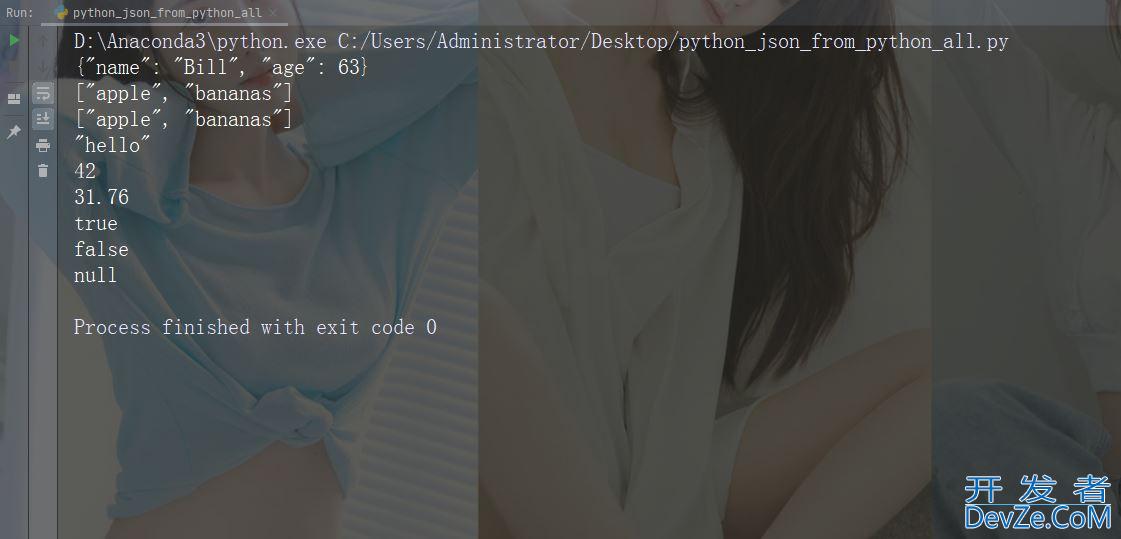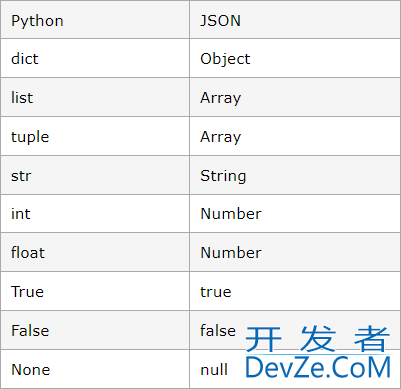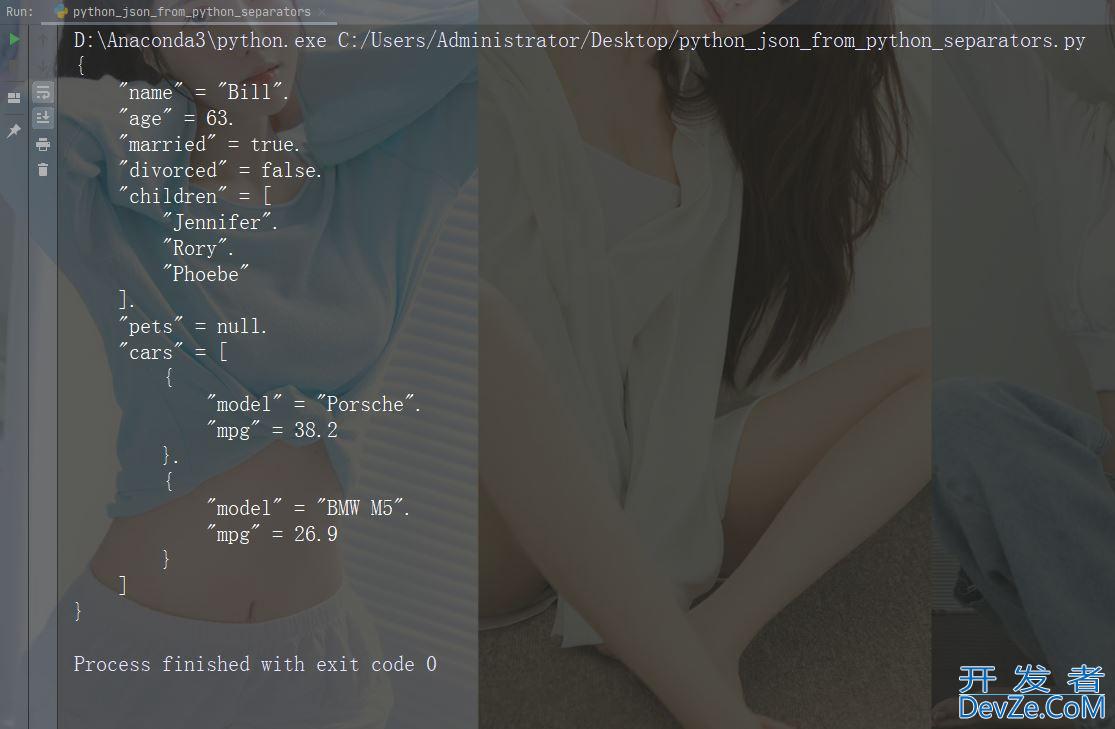jsON 是用于存储和交换数据的语法。
JSON 是用 JavaScript 对象表示法(javascript object notation)编写的文本。
python 中的 JSON
Python 有一个名为 json 的内置包,可用于处理 JSON 数据。
实例
导入 json 模块php:
import json
解析 JSON - 把 JSON 转换为 Python
若有 JSON 字符串,则可以使用 json.loads() 方法对其进行解析。
结果将是 Python 字典
实例
把 JSON 转换为 Python:
import json
# 一些 JSON:
x = javascript'{ "name":"Bill", "age":63, "city":"Seatle"}'
# 解析 x:
y = json.loads(x)
# Python学习交流q群:708525271
# 结果是 Python 字典:
print(y["age"])
运行实例

把 Python 转换为 JSON
若有 Python 对象,则可以使用 json.dumps() 方法将其转换为 JSON 字符串。
实例
把 Python 转换为 JSON:
import json
# Python 对象(字典):
x = {
"name": "Bill",
"age": 63,
"city": "Seatle"
}
# 转换为 JSON:
y = json.dumps(x)
# 结果是 JSON 字符串:
print(y)
运行实例

您可以把以下类型的 Python 对象转换为 JSON 字符串:
- dict
- list
- tuple
- string
- int
- float
- True
- False
- None
实例
将 Python 对象转换为 JSON 字符串,并打印值:
import json
print(json.dumps({"name": "Bill", "age": 63}))
print(json.dumps(["apple", "bananas"]))
print(json.dumps(("apple", "bananas")))
print(json.dumps("hello"))
print(json.dumps(42))
print(json.dumps(31.76))
print(json.dumps(True))
print(json.dumps(False))
print(json.dumps(None))
运行实例

当 Python 转换为 JSON 时,Python 对象会被转换为 JSON(JavaScript)等效项:

实例
转换包含所有合法数据类型的 Python 对象:
import json
x = {
"name": "Bill",
"age": 63,
"married": True,
"divorced": False,
"children": ("Jennifer","Rory","Phoebe"),
"pets": None,
"cars": [
{"model": "Porsche", "mpg": 38.2},
{"model": "BMW M5", "mpg": 26.9}
]
}
print(json.dumps(x))
运android行实例
格式化结果
上面的实例打印一个 JSON 字符串,但编程它不是很容易阅读,没有缩进和换行。
json.dumps() 方法提供了令结果更易读的参数:
实例
使用 indent 参数定义缩进数:
json.dumps(x, indent=4)
运行实例
python_json_from_python_indent.py:
import json
x = {
"name": "Bill",
"age": 63,
"married": True,
"divorced": False,
"children": ("Jennifer","Rory","Phoebe"),
"pets": None,
"cars": [
{"model": "Porsche", "mpg": 38.2},
{"model": "BMW M5", "mpg": 26.9}
]
}
# use four indents to make it easier to read the result:
print(json.dumps(x, indent=4))
您还可以定义分隔符,默认值为(", ", ": "),这意味着使用逗号和空格分隔每个对象,使用冒号和空格将键与值分开:
实例
使用 separators 参数来更改默认分隔符:
json.dumps(x, indent=4, separators=(". ", " = "))
运行实例
import json
x = {
"name": "Bill",
"age": 63,
"married": True,
"divorced": False,
"children": ("Jennifer","Rory","Phoebe"),
"pets": None,
"cars": [
{"model": "Porsche", "mpg": 38.2},
{"model": "BMW M5", "mpg": 26.9}
]
}
# use . and a space to separate objects, and a space, a = and a space to separate keys from their values:
print(json.dumps(x, indent=4, separators=编程客栈(". ", " = ")))

对结果排序
json.dumps() 方法提供了对结果中的键进行排序的参数:
实例
使用 sort_keys 参数来指定是否应对结果进行排序:
json.dumps(x, indent=4, sort_keys=True)
运行实例
import json
x = {
"name": "Bill",
"age": 63,
"married": True,
开发者_Python学习 "divorced": False,
"children": ("Jennifer","Rory","Phoebe"),
"pets": None,
"cars": [
{"model": "Porsche", "mpg": 38.2},
{"model": "BMW M5", "mpg": 26.9}
]
}
# sort the result alphabetically by keys:
print(json.dumps(x, indent=4, sort_keys=True))
到此这篇关于Python入门教程(二十八)Python中的JSON的文章就介绍到这了,更多相关Python中的JSON内容请搜索我们以前的文章或继续浏览下面的相关文章希望大家以后多多支持我们!









 加载中,请稍侯......
加载中,请稍侯......
精彩评论